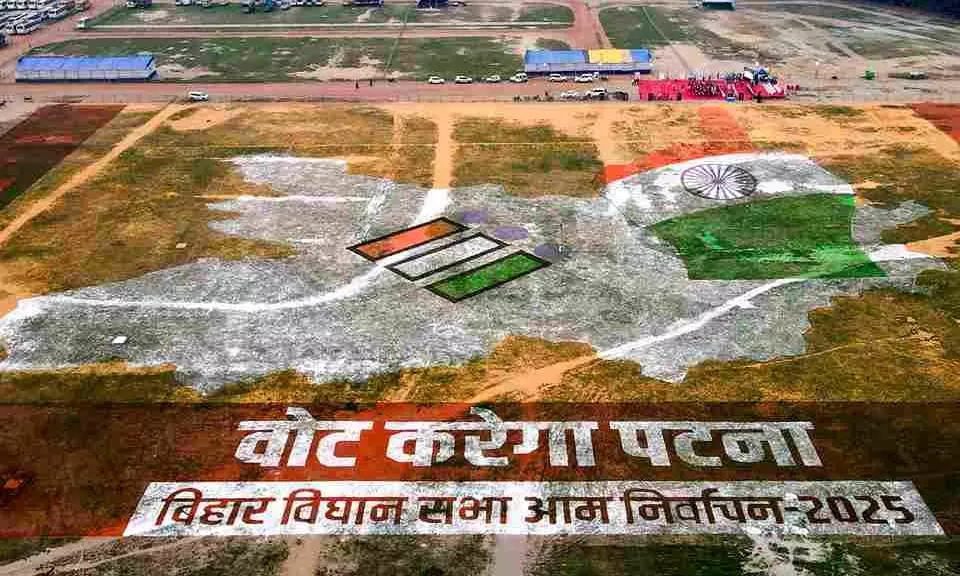
Upper castes dominate as parties mostly retain 2020 caste mix in seat allocation
Despite talks of social justice and EBC upliftment, BJP, JD(U), Congress RJD continue to favour upper castes in ticket distribution for the 2025 Assembly polls

As Bihar heads into another Assembly election cycle, caste dynamics remain central to party strategies — but the promised shift towards inclusive representation, particularly of the Extremely Backward Castes (EBCs), has barely materialised.
An analysis of seat allotments in 2020 and 2025 reveals that the National Democratic Alliance (NDA) and the Mahagathbandhan (Grand Alliance) have made only incremental changes in caste representation, with upper castes still enjoying disproportionate prominence across most major parties.
Upper castes hold ground
In 2025, the BJP has fielded 49 upper caste candidates out of 101, a marginal drop from 52 in 2020, while EBC representation has increased slightly from 9 to 10.
Across the NDA alliance, only 36 out of 243 candidates belong to the EBC category — it works out to be just 14.81 per cent — despite the rhetoric of EBC-centric politics by the ruling coalition.
On the Opposition front, the Rashtriya Janata Dal (RJD) has increased its upper-caste candidates from 12 in 2020 to 16 in 2025, while slightly reducing EBC representation from 24 to 21. The Congress has significantly cut down upper-caste representation (from 34 to 20 seats), while marginally increasing OBC and EBC representation.
Also read: How Bihar NDA sidelines EBCs in seat allotment despite vote-bank loyalty
Despite launching the "Ati Pichhda Nyay Sankalp" (Resolve for Justice for the Extremely Backward) in 2025 to woo the EBC voter base, the Grand Alliance’s candidate choices do not reflect this commitment in practice.
Still on the margins
Muslim representation also remains skewed. The BJP has not fielded any Muslim candidate, be it 2020 or 2025, while the JD(U) allotted 11 seats to minorities in 2020, against just 4 this year.
This is the situation despite Muslims forming 17 per cent of the state’s population. In contrast, the Congress and RJD have fielded 18 and 10 minorities, respectively, in both 2020 and 2025.
Also read: Why NDA fielded only 5 Muslim faces in Bihar elections
Dalit (Scheduled Caste) representation remains stagnant or slightly reduced across most parties, while Scheduled Tribes (STs) are virtually absent in candidate lists, especially on the part of the BJP and its allies. The BJP has reduced SC representation, from 15 to 2020 to 11 this year, having allotted just 1 seat each to an ST, both in 2020 and 2025.
This is a notable factor considering SCs and STs together constitute over 20 per cent of Bihar's population.
The JD(U) brought down SC candidates from 18 to 15, and retained the ST number at 1.
The Congress maintained its SC representation (10 each) and continues to have no ST representation at all in both elections.
Even Nitish Kumar, whose support base is rooted in the EBCs, has shied away from giving them proportionate representation. It exposes the double-speak on social justice
The RJD has slightly increased its SC representation (19 to 21) but has fielded no ST candidates this time, a rollback from the 2 seats in 2020.
EBCs: A neglected majority?
The data underlines a consistent neglect of EBCs by both ruling and Opposition alliances, despite being Bihar’s single-largest caste bloc.
As political commentator Rupesh Kumar told The Federal, "Even Nitish Kumar, whose support base is rooted in the EBCs, has shied away from giving them proportionate representation. It exposes the double-speak on social justice."
Also read: What BJP’s Bihar candidates’ list tells about its deep ties with ‘savarnas’
With only slight shifts in seat allotments, Bihar's 2025 Assembly elections appear set to mirror the social imbalances of previous years. As the state awaits its next leadership, the question remains: When will representation finally reflect reality?

